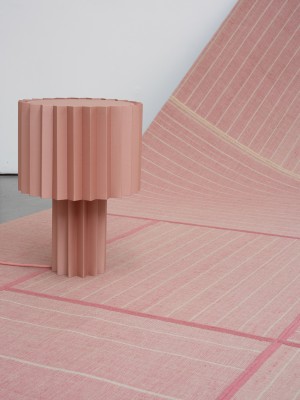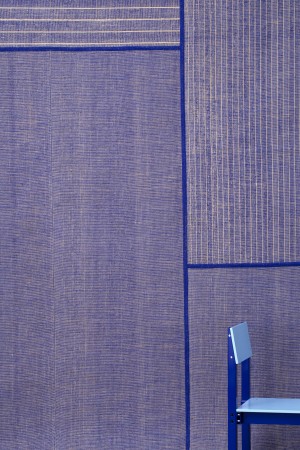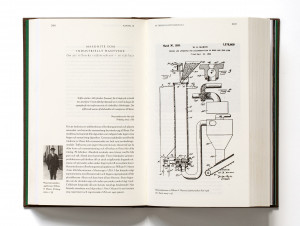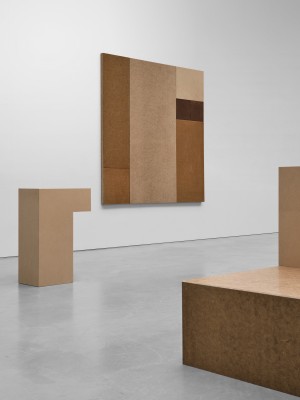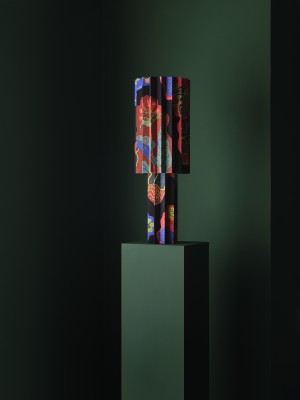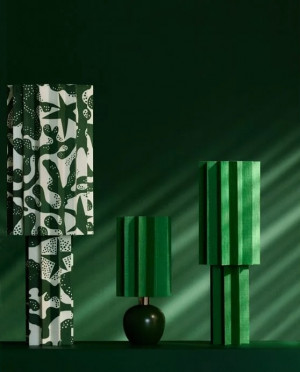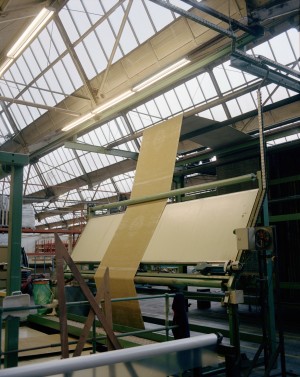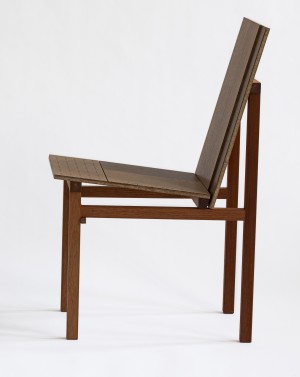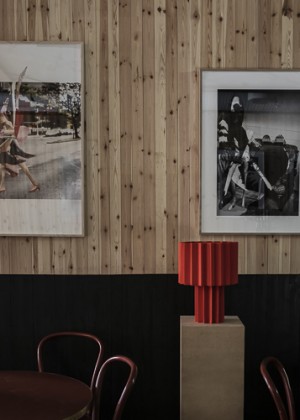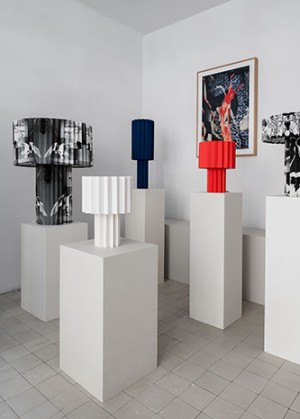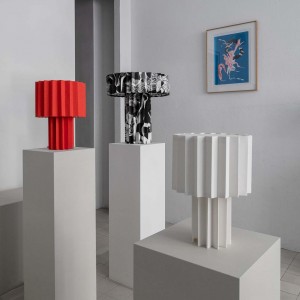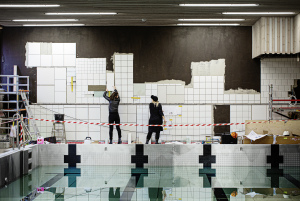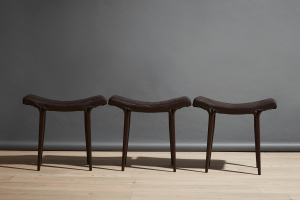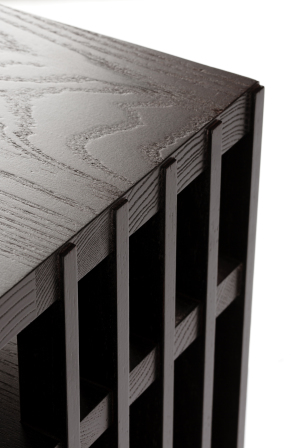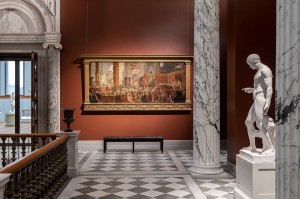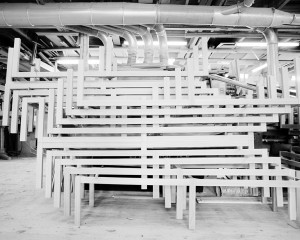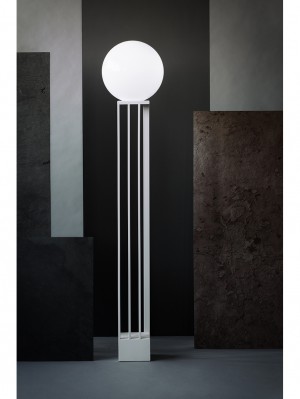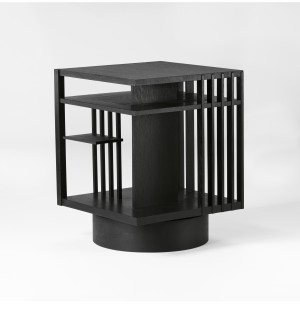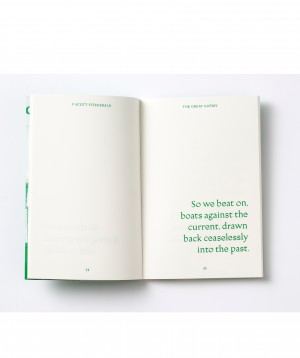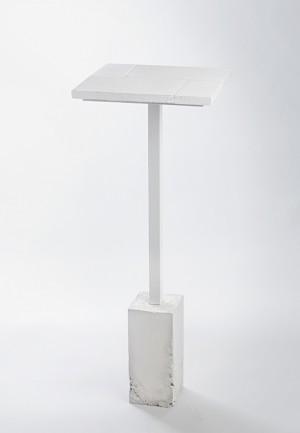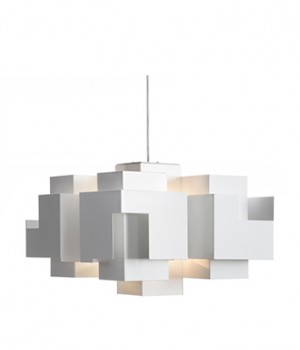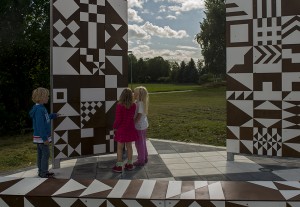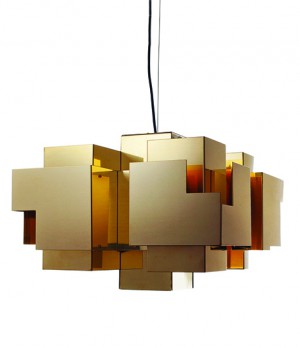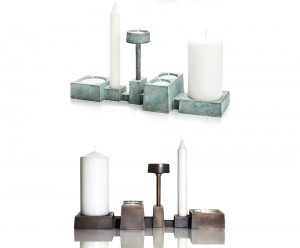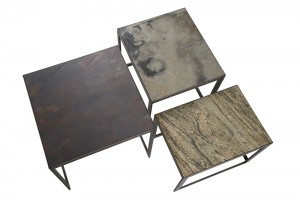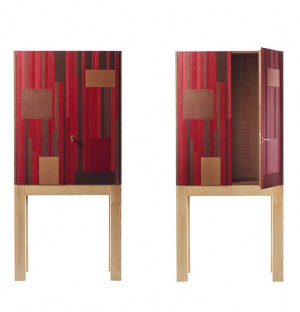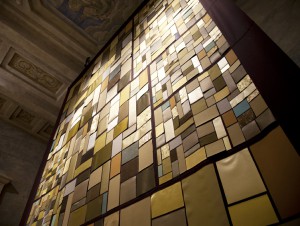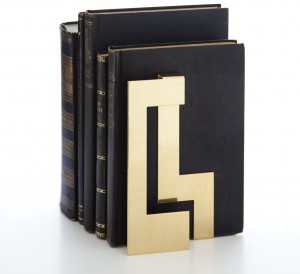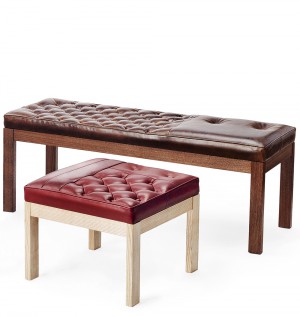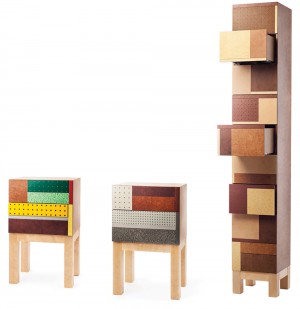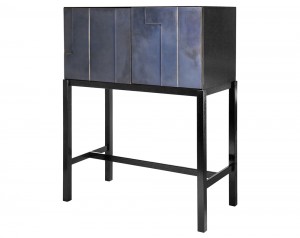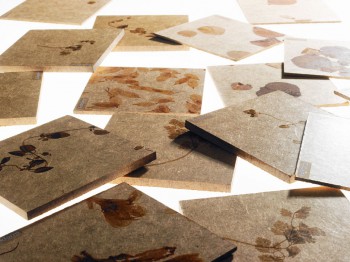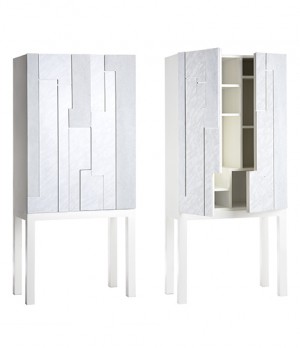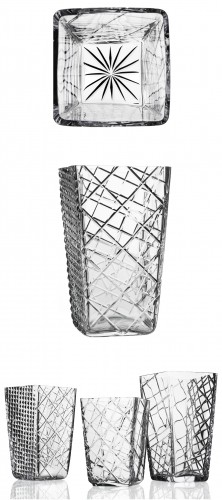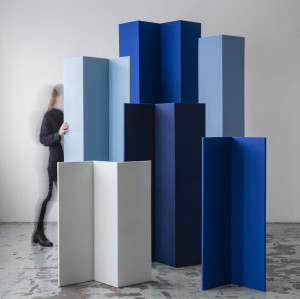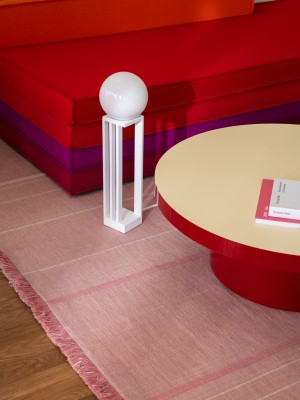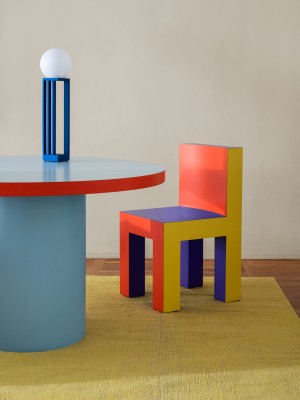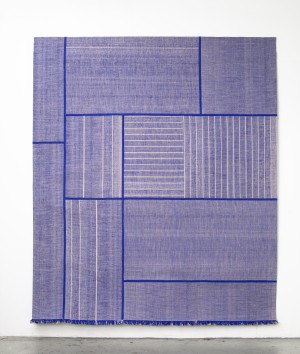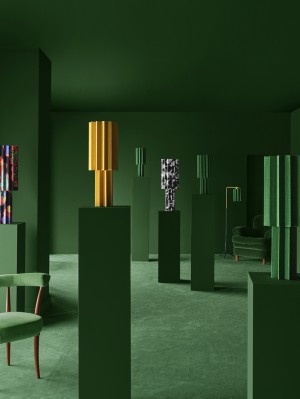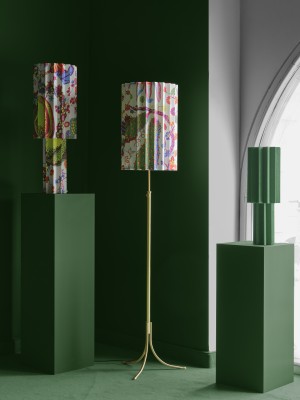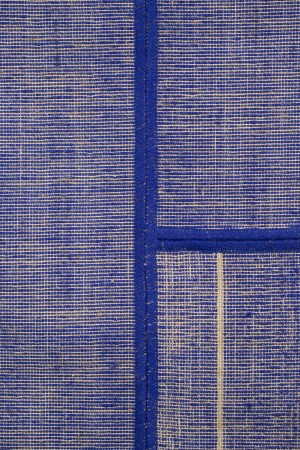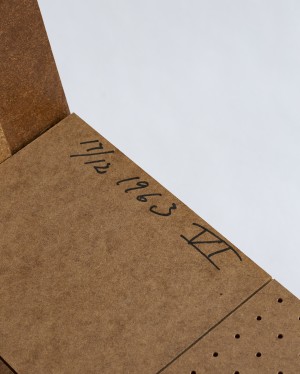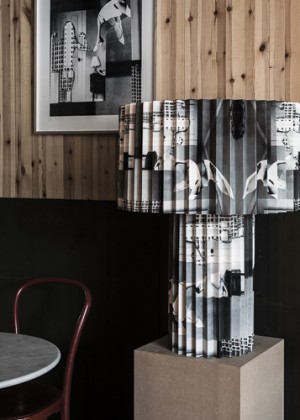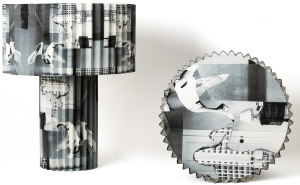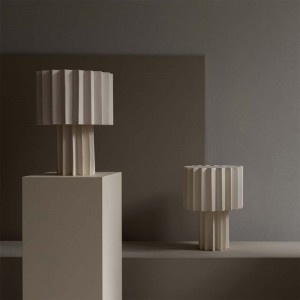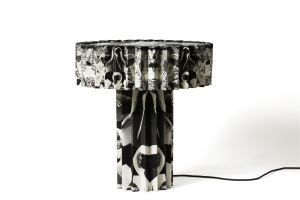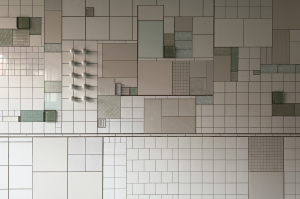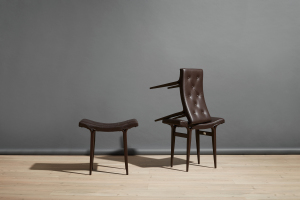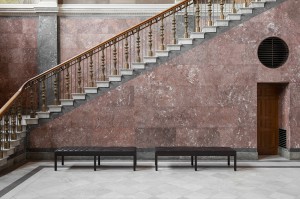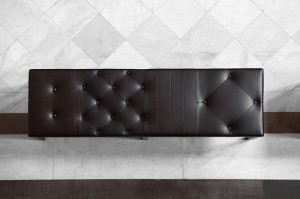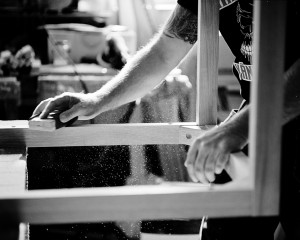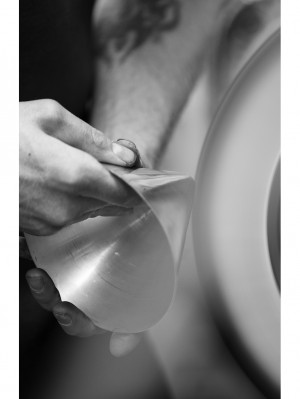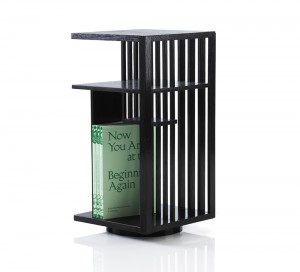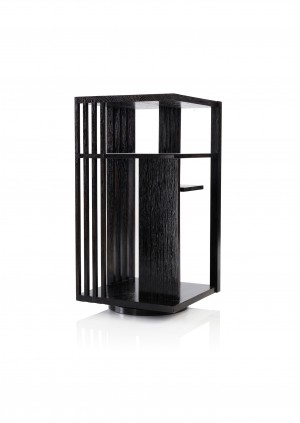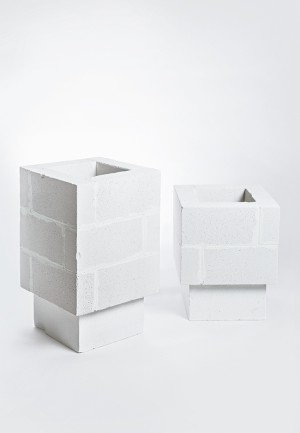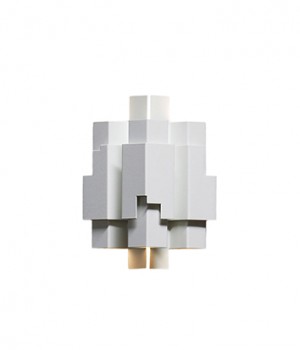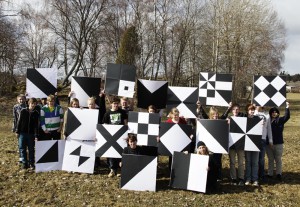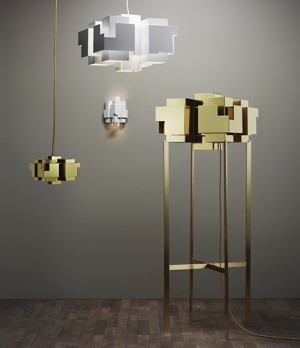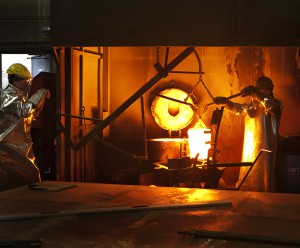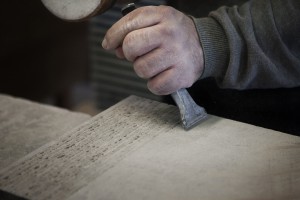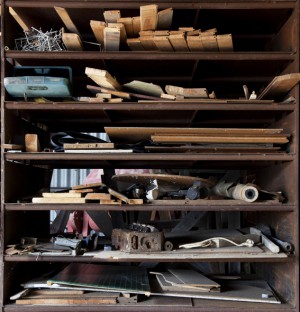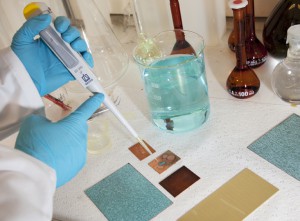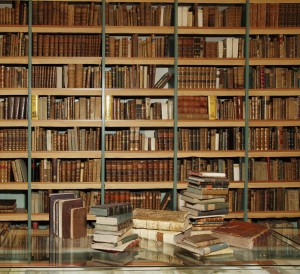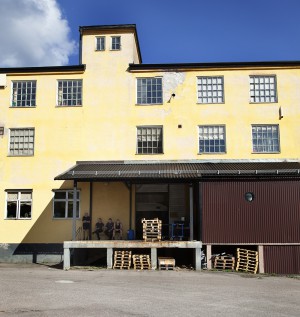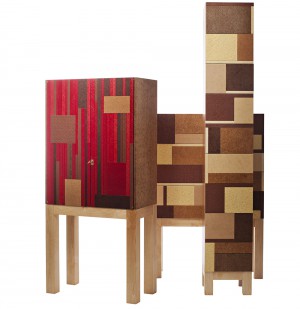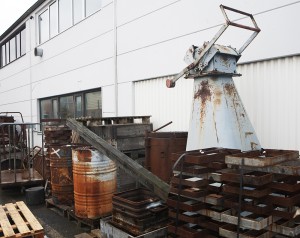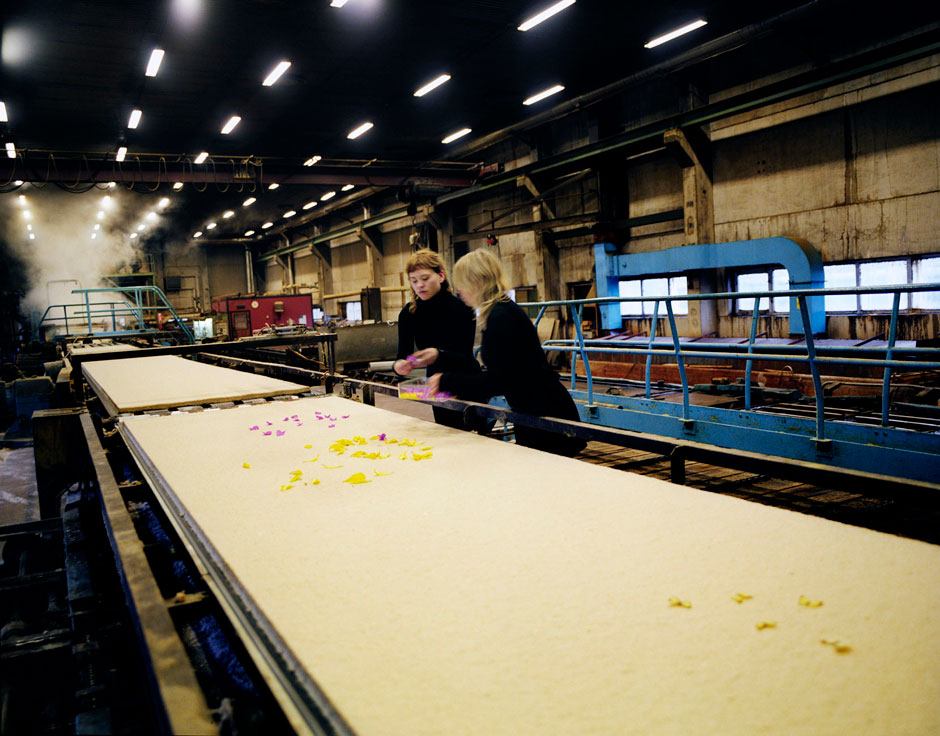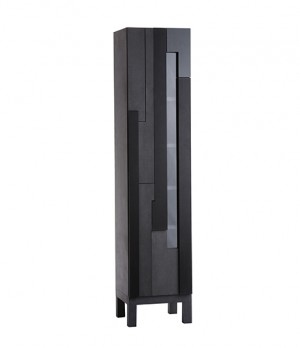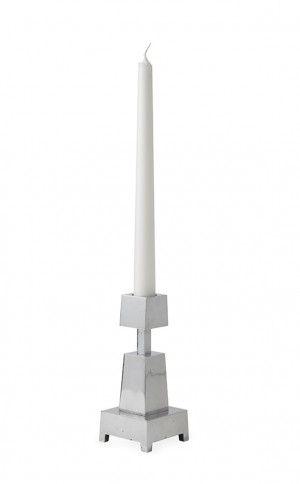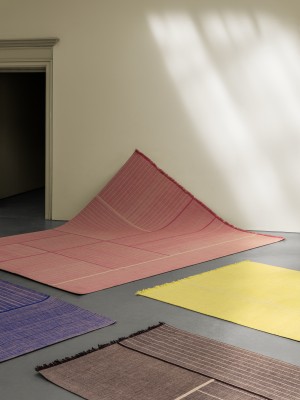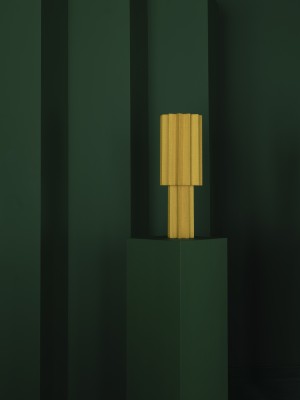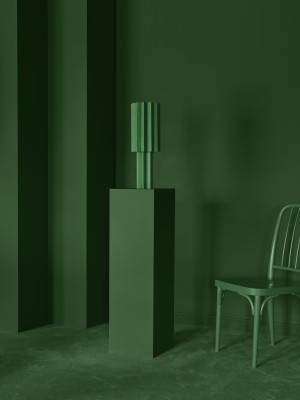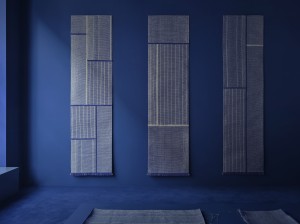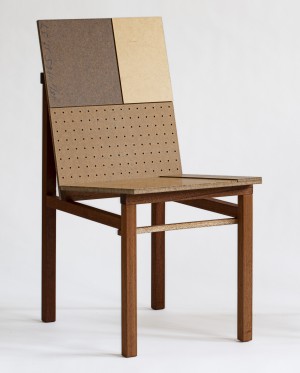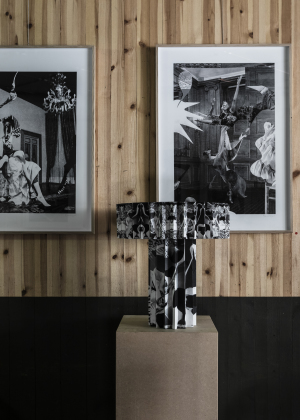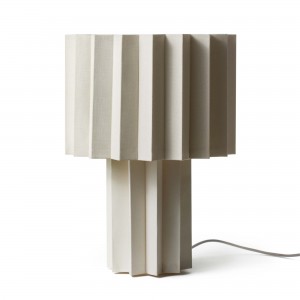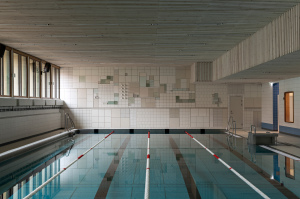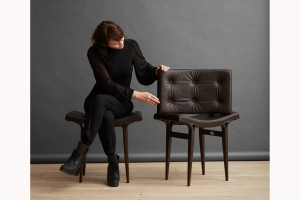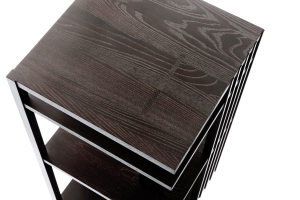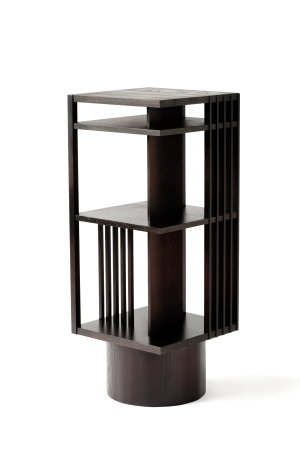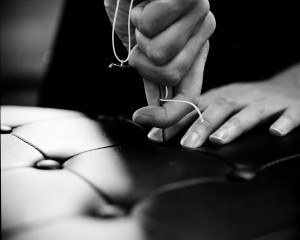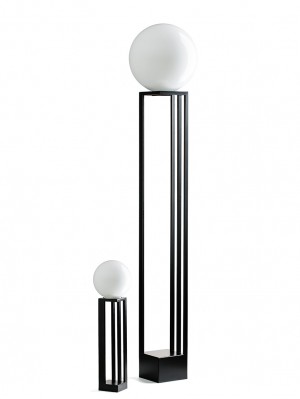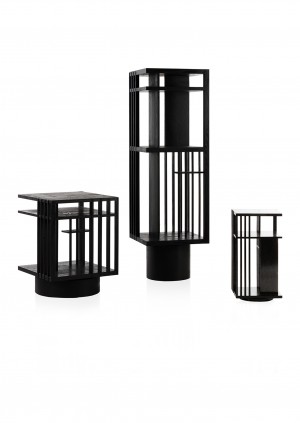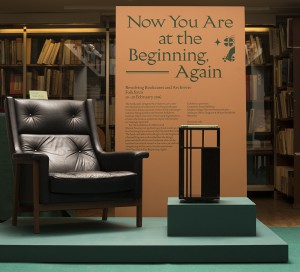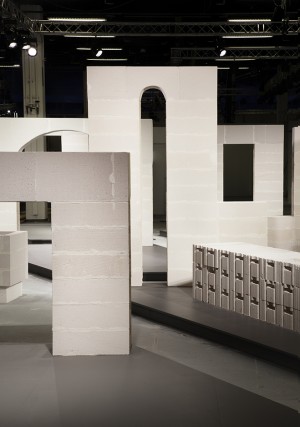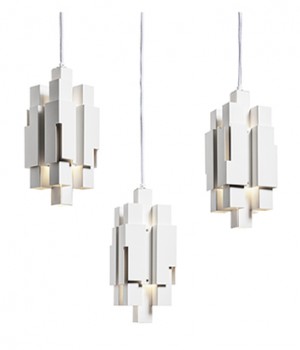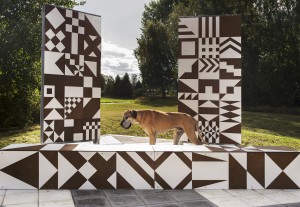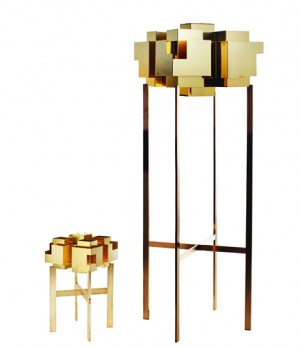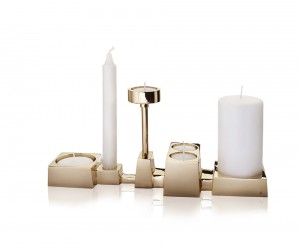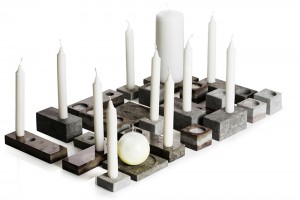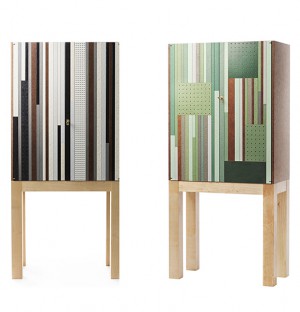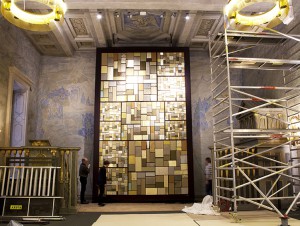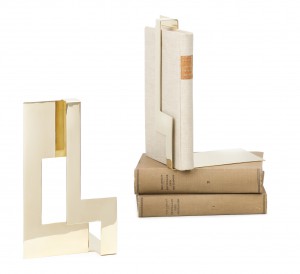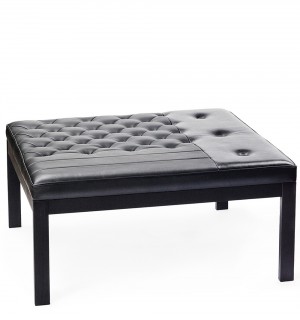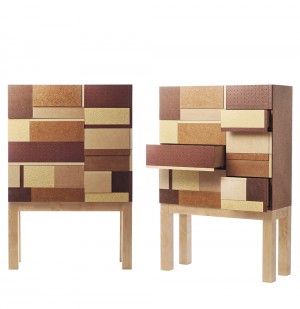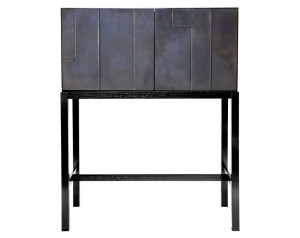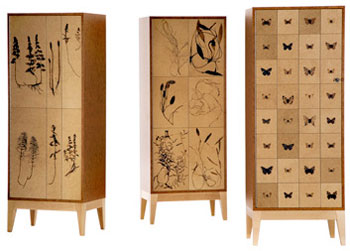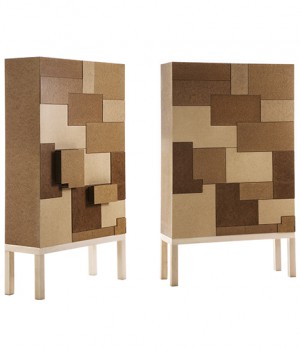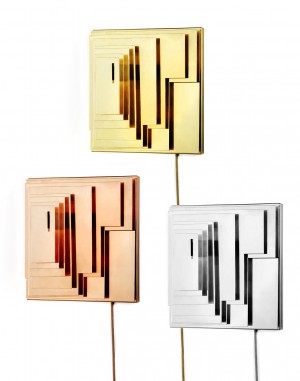The Monochromes with Louis de Poortere, Belgium
Produced in collaboration with Belgian carpet manufacturer Louis De Poortere.
The Monochromes Collection is a series of Wilton rugs in which the backside has been flipped to become the front.
The jute backing has been retained, but now moves front and centre, where its construction is highlighted by the addition of brilliantly coloured wool weft threads. As the wool weft weves its path trough the jute warp, colour is allowed to build up or fall away as dependent on the density of the weave – different shades of the same colour emerge through the treatment of a single thread.
The collection has been created in 12 colours and 8 sizes.
For more information please contact Louis De Poortere or Dahl Agenturer
www.louisedepoortere.be
www.dahlagenturer.se {–––}
Production Novellas
When the last Masonite factory in Sweden closed in 2011, Masonite became a historical and cultural heritage. The thesis portrays the collaboration between designers and craftsmen in various workshops, mainly within the Swedish manufacturing industry. It highlights the importance of a design process close to production and shows the many relationships hidden behind the product’s creation process.
The book can be purchased by
Konst/ig Books
at https://konstigbooks.com/design-crafts/anna-lovisa-holmquist-produktionsnoveller.html
or email us
info@folkform.se.
The Last of the Hardboards
The exhibition is a piece of industrial history told through our work with the Masonite hardboard. A decade of investigations and experimentation with the board material has resulted in a retrospective exhibition and a book publication titled the Production Novellas.
{–––}
Pleated for Frank
Folkform’s pleated table lamp has previously been shown in other versions, but never in patterns and fabrics by Josef Frank and Svenskt Tenn. The collection includes fixtures and lamp shades in Josef Frank’s classic patterns Aristidia (1920s), Brazil (1940s) and Poisons (1940s), as well as with monochrome variations in Svenskt Tenn’s own linen fabric. Brazil has one of the largest pattern repeats amongst Josef Frank’s patterns, which gives every lamp its own print composition. {–––}
The Blue Tapestries
The Blue Tapestry Artworks are presented alongside images by documentary photographer Magnus Laupa charting the manufacturing process. At a time when the heritage of small-scale, local industry is threatened by global mass production, the proximity to the manufacturing processes presented in The Blue Tapestries becomes even more meaningful. {–––}
The Masonite Chair
The Folkform + Åke Axelsson Masonite Chair was designed as a unique piece for the exhibition Talking to Åke at Sven Harrys Art Museum.
{–––}
L’Art Plissé: Folkform + Hjort
Textile prints of Hjort’s works have been used to create Folkform’s pleated lampshades, giving the lights a dynamic, sculptural character. A series of monochrome lamps will also be available.
Public Art Installation in Spånga
In the mural we explored materials by visually play with the tension between new and old surfaces. Instead of manufacturing all new materials for the project the glass represents a creative practice of reuse and the tiles and bricks are an instance of employing industrial ready-mades. It is utilising old ornamented vintage glass and new pressed glass prisms that were going to be discarded, bringing them back to life.
{–––}
Folkform Interpret Tabouret
The covering is made of leather from the Tärnsjö tannery and in the same dark brown tone used for the benches Folkform designed for the National Museum in 2018. The legs are pigmented with varnish in dark brown. {–––}
Revolving Bookcase for Nationalmuseum
Revolving bookcase are for sale through Folkform, limited edition and studio produced. {–––}
Gallery Benches, Nationalmuseum
Folkform worked with the upholsterer Sara Lindqvist to develop the different upholstery methods, these ranging from the eighteen century (1700) and nineteenth century (1800), to minimalist styles from the beginning of the twentieth century(1900). In this sense, Patchwork is a perfect refection of its new environment, a building with a nineteenth century heritage, updated for a twenty-first century audience. {–––}
New Gallery Benches for Nationalmuseum
Design studio Folkform is proud to reveal Patchwork, a specially commissioned leather Bench that will grace the museum´s galleries and entrance lobby. {–––}
Folkform in Milan
Join us in Milan
April 16-22
Via Eugenio Balzan 4, in Brera Design District
Press Preview Monday 16 April 09.00-17.00
Opening Party Tuesday 17 April 18.00-22.00
Welcome! {–––}
Revolving Bookcase at Svenskt Tenn
The bookcases are a new interpretation of traditional revolving bookcases, these often featuring three or four levels with larger volumes being stored at the bottom. The Revolving Bookcase is currently produced for Svenskt Tenn in black lacquered ash by Eriksson & Söner Cabinet Makers in Vrena, outside Nyköping. {–––}
Book Release
For the exhibition, Folkform and the graphic designer Martin Frostner, will publish a book made up of the finishing lines of novels contained in the Rönnell collection. The book will allow all endings to be the beginning of something new, and the title of the book and the exhibition “Now you are at the beginning again” appears in the final lines of a novel written by the young author, Amelia Atwater-Rhodes. {–––}
Bartable Light Weight Concrete
Each is made from blocks of Ytong aerated concrete, a lightweight material with a matte surface that disguises a highly porous inner structure. {–––}
Skyline Pendant
The Skyline lamp series designed by Folkform is now being produced by Swedish lighting brand Örsjö Belysning, the design of the blocky forms are based on the concrete buildings of a Stockholm suburb. {–––}
Black and White Fractional Numbers
Sculpture inspired by mathematical fractional numbers, the black and white squares are divided into geometric shapes each representing a mathematical problem. {–––}
Suburban Skyline, pendant
The lamp was gifted to the Swedish consort Her Majesty Queen Silvia for her seventieth birthday from the Prime Minister and the Swedish Parliament. {–––}
Candle Collage, bronze
Candle Collage is available in brass through Skultuna. Bronze and aluminum is available in limited edition. {–––}
Stone Veneer Tables
Folkform wish to create something together with some of the few stone masons still in existence. The table is made out of 1mm stone veneer. {–––}
Masonite : Memoriam
Green and Red Masonite Cabinet with two doors.
Dimension: 700 x 1500 mm
Edition: 4 pieces / each {–––}
7 x 4m Composition in Fabric and Metals
The textile consists of over 600 pieces of metals and fabrics that are sawn by hand.
{–––}
Bookends
Patchwork Leather Bench
The Leather benches are made from different leather upholstery methods, combined in the same bench. {–––}
Bronze Cabinet
For the Bronze Cabinet collection FOLKFORM collaborated with a brass foundry on the south {–––}
Masonite boards
By combining wood fibres with other organic material it has been possible to give this down-to-earth material an entirely new look. {–––}
Unique Standard Marble Cabinet
The collection Unique Standard, questions our perception of various materials. {–––}
Industrial Intervention – Crystal Glass
The project Industrial Intervention started off with a trip to the old glassworks in the Czech countryside. The new pieces explore the collision between… {–––}
Production Novellas
The Production Novellas is an artistic investigation of material and place, revealing a decade of research by Anna Holmquist, co-founder of Folkform design studio. Told through her 10-year collaboration with a now-closed Masonite factory in Rundvik, Norrbotten, Holmquist examines how design can re-connect consumers with industry, craft and local traditions. {–––}
The Last of the Hardboards
The Folkform exhibition “the Last of the Hardboards” is on view at Konstakademien in Stockholm until 29 April 2023.
Address
Fredsgatan 12, Stockholm {–––}
Pleated for Frank
Art and design duo Folkform interprets Josef Frank’s pattern universe in a new lighting collection for Svenskt Tenn. The series of sculptural and pleated table lamps and lamp shades are launched together with a large exhibition that opens in connection with Stockholm Design Week 2023.
The Blue Tapestries
The new tapestries, all of which are signed and numbered, were created with the Belgian carpet manufacturer Louis De Poortere (LDP). {–––}
The Masonite Chair
The Masonite Chair is made from original recovered Masonite from 1963, in combination with the last Masonite boards produced in the factory in Rundvik in April 2011. {–––}
L’Art Plissé: Folkform + Hjort
All lamps for sale through Folkform.
First edition and studio produced.
Please contact us for more information at info@folkform.se
L’Art Plissé
FOLKFORM + HJORT: L’ART PLISSÉ
The exhibition L’art plissé focuses on the subtle art of pleating. In it, the design studio Folkform presents a new series of table lamps whose forms are inspired by pleated fashion garments. {–––}
Public Art Installation in Spånga
As the local community come to swim, we wanted the artwork to remind them of the built environment outside of the pool. The pattern of the mural is an abstracted visualisation of the suburb’s city plan as seen from above. The composition is reminiscent of a topographical map with its town square, a tree-lined avenue, the train track and train station, all represented in different materials.
{–––}
Bruno Mathsson
In their new interpretation of the tabouret, Folkform’s ambition is to challenge the classic shape drawn by Bruno Mathsson by means of combining materials and techniques in new ways. {–––}
Nationalmuseum Entrance Lobby
After five years of renovations, the Nationalmuseum in Stockholm is reopening with updated galleries, and a new-look museum restaurant and retail space. When it now opens its doors to the public, design studio Folkform is proud to reveal Patchwork; a specially commissioned leather bench that will grace the museum’s galleries and entrance lobby.
{–––}
Patchwork Bench
The bench has a dark-stained wood base with a seat upholstered in leather. While the design at first appears strict, Folkform has taken a playful approach to the leather upholstery and has experimented with a patchwork of different leather upholstery methods from deep-buttoning to plain leather surfaces, combining different traditional techniques in new ways.
{–––}
In Collaboration with Eriksson & Söner
Folkform produced 25 benches for Nationalmuseum and worked closely with the cabinets makers Eriksson & söner, the carpentry workshop in Vrena. {–––}
From the Hands Of
Folkform invited documentary photographer Magnus Laupa to follow the work of the craftsmen in the Örsjö lamp factory. The resulting images will be presented in Örsjö Belysning stand during Stockholm Furniture Fair 2018. Each new piece has been executed by the hands of skilled craftsmen. The most common definition of craft is that it involves the skill of making things by {–––}
Folkform at Rönnells
The exhibition is a unique collaboration between Folkform and the long-established Rönnells bookshop on Birger Jarlsgatan, Stockholm. Folkform have chosen the beautiful rooms of the venerable bookshop for the exhibition of their new book cases, a place filled with books from floor to ceiling, where they will put their new sculptural bookcases on show for the first time.
{–––}
Archiver
The rectangular cases sit on cylindrical bases, which rotate so books can be accessed from every angle. The bookcases come in different heights, the smaller archiver can be placed on a table or desk. {–––}
Light Weight Concrete Planter
Each is made from blocks of Ytong aerated concrete, a lightweight material with a matte surface that disguises a highly porous inner structure. {–––}
Skyline Wall
The new Skyline Wall light was designed in 2014. The series comes in white powder-coated aluminium, as well as brass and cortén steel. The wall light can be used for both indoor and outdoor areas. {–––}
Black and White Fractional Numbers
The patterns were created during a workshop with the children at the school.
Vansta 2013 {–––}
Suburban Skyline
The Skyline lamp series is designed by Folkform. The lamp is inspired by the architecture of different suburban districts of Stockholm. {–––}
Limnhamn – The foundry of Candle Collage
For the candle collage collection FOLKFORM collaborated with a brass foundry on the south coast of Sweden. {–––}
Gillberga – The stone quarry
The latest stop on Folkform’s journey through the Swedish manufacturing industry has been {–––}
The recovered Masonite from 1929
The cabinets are made from original recovered Masonite from 1929, in combination with the last {–––}
7 x 4m Composition in Fabric and Metals
For this unique textile Folkform collaborated with the material scientists at the Institute of Technology in Stockholm. {–––}
The Hagströmer Libary
An old book is not just literature but often a hand crafted artefact in itself.
{–––}
Tärnsjö- The leather tannery
This road trip went to the Tärnsjö leather Tannery established in 1857. {–––}
Limnhamn – The foundry
Folkform is committed to working with local manufacturers. For the Bronze Cabinet collection {–––}
The Making of Masonite
Natural flowers have been inserted into the huge masonite presses to embed a permanent organic decoration. {–––}
Candleholder, Raw Aluminium
For this collection FOLKFORM collaborated with a brass foundry on the south coast of Sweden. The duo is committed to working with local manufacturers
{–––}
Kvadrat Tracing Water, Copenhagen
Tracing Water
The textile industry is one of the world’s most water-intensive industries. Textile production uses around 93 billion cubic metres of water annually: large quantities are consumed in the manufacturing process, as well as in the production of raw materials. However, this issue is often overlooked in the choice of textiles for a project, and so Kvadrat is developing different initiatives to minimise impact on water resources during manufacturing.
The fabrics chosen for the dividers, Sport and Tero Outdoor, use post-consumer plastic waste and challenge the perceived aesthetic of reused materials – all of which chimes with Folkform’s interest in questioning people’s preconceptions of what materials are considered valuable or not. Sport uses 100 per cent recycled plastic otherwise bound for the ocean, while Tero Outdoor reuses polyester, which significantly reduces water consumption during textile production.
Folkform at Kvadrat during 3 Days of Design
12-14 June 2024
Exploring water’s role in design.
With Tracing Water by Folkform, recycled plastic take on new life as vibrant blue room dividers made from recycled polyester textiles, sparking conversations on reuse, recycling, and the intricate connection between water and textile production.
Address
Pakhus 48
Copenhagen
Opening hours
Wednesday: 9am – 10pm
Thursday– Friday: 9am – 6pm
Welcome! {–––}
Public Art Installation in Sundbyberg
A permanent installation, a recycling room at Fabriksparken in Sollentuna, outside of Stockholm.
The Green Room is an interpretation of the environmental room in Fabriksparken, Sollentuna. The artwork is a green composition where tiles and the green painted walls together create a collage. The lighting with integrated spotlights and the daylight coming in through the window further enhances all the green shades of the room.
Löfströms allé 5, Sundbyberg {–––}
Production Novellas
A large part of the production today is manufactured so far from the consumer that there is no connection to the production. That there have historically been direct connections between an industry and the people, local traditions and material assets of the place is easily forgotten. The thesis makes these relationships visible through an artistic exploration conducted through a combination of materials, form,craft, image and text. The starting point in the thesis is the design and documentation of Masonite, which the design duo Folkform worked on for more than a decade. Masonite has become synonymous with an entire range of different types of fibreboard. This investigation takes its starting point in sheets of the Masonite brand, spelled with a capital “M” and a lowercase “e” at the end, a wood fibre material invented by William H. Mason in the United States in the 1920s. {–––}
The Last of the Hardboards
The Last of the Hardboards
March 18 – April 29 2023
Konstakademien
Fredsgatan 12, Stockholm
Pleated for Frank
Traditional pleating techniques in focus when Folkform presents new collection for Svenskt Tenn.
Svenskt Tenn
Strandvägen 5
Stockholm
The Blue Tapestries
Folkform’s work is both inspired by and challenges traditional manufacturing techniques. The Blue Tapestry Artworks are no exception. They draw on the Wilton carpet, a type of woven textile developed in 18th-Century England. These are made using a single backing, often jute, woven around the pile yarn. The Blue Tapestry Artworks subvert this tradition by combining jute with a blue wool yarn and bringing it to the front of the textile. The resulting tapestries see rich ultramarine intersect with the beige of jute. Subtle gradations of colour create a spectrum of different tones. The immateriality of blue meets with earthy, natural shades.
The Masonite Chair
The Masonite Chair is a collaboration between the iconic Swedish interior architect Åke Axelsson and Folkform. The chair is inspired by an experimental design by Åke Axelsson from 1978, he then made several interpretations of a Marcel Breuer chair ”Ti3a”.
{–––}
L’Art Plissé: Folkform + Hjort
The exhibition L’art plissé focuses on the subtle art of pleating. In it, the design studio Folkform presents a new series of table lamps whose forms are inspired by pleated fashion garments, alongside 10 newly created artworks – some of which are also folded – by the artist Roland Hjort. {–––}
L’Art Plissé
The exhibition L’art plissé focuses on the subtle art of pleating. In it, the design studio Folkform presents a new series of table lamps whose forms are inspired by pleated fashion garments, alongside 10 newly created artworks – some of which are also folded – by the artist Roland Hjort. Textile prints of Hjort’s works have been used to create Folkform’s pleated lampshades, giving the lights a dynamic, sculptural character. A series of monochrome lamps will also be available.
All lamps for sale through Folkform, first edition and studio produced, please contact us for more information at info@folkform.se {–––}
Public Art Installation in Spånga
The Stockholm-based design studio Folkform has completed a permanent installation for the public indoor swimming pool in Spånga, outside of Stockholm. The mural, that runs along the short end of the pool, features a decorative composition crafted from ceramic tiles and old vintage glass. The wall comprises over 1000 individual glass and ceramic pieces and the design is inspired by the town plan of Spånga as seen from above. {–––}
Folkform for Bruno Mathsson International
The classic stool Anna was initially designed in 1945 by Bruno Mathsson, one of Sweden’s most internationally known designers. {–––}
Revolving Bookcase for Nationalmuseum
Revolving bookcase are for sale through Folkform, limited edition and studio produced. {–––}
Revolving Bookcase for Nationalmuseum
Revolving bookcase are for sale through Folkform, limited edition and studio produced. {–––}
Patchwork Bench
Folkform worked with the master upholsterer Sara Lindqvist to develop the different upholstery methods, ranging from the nineteenth century to minimalist styles from the beginning of the twentieth century. {–––}
Libreria at Örsjö Belysning
Libreria lamp is now in production by Örsjö Belysning.
Folkform have worked with objects closely related to books and literature for some time now, one example beeing the revolving bookcases for Svenskt tenn. The new Folkform floor and table lamp is titled the Libreria lamp since it was first designed for an exhibition in an old bookbinders workshop in Milan. {–––}
Revolving Bookcases
A new series of revolving bookcases and archivers designed by Folkform were launched during Stockholm design week. The exhibition was hosted at Rönnells antique booksellers. {–––}
Reading By Carl Johan De Geer
During the opening night, artist and author Carl Johan De Geer was reading from a book in the revolving bookcase. Carl Johan is an example to us , we are inspired by his artistry and we admire his writing. We wanted the bookcase to provide a home for his texts and invited him to read, said Folkform
Twelve Arches
The arches very from tall to big, rounded to flat, narrow to wide. In the shadow of each arch one of the participating designers has been invited… {–––}
Skyline Bar Light by Folkform
The new Skyline bar pendant light can be used as a solitaire light or in arrangements in groups. The sculptural light is designed for public areas and interiors. {–––}
Black and White Fractional Numbers
Commission for the National Public Art Council.
Vansta, 2013
{–––}
Suburban Skyline, table and floor
In collaboration with the lamp factory in Örsjö, Folkform examine the opportunities of the metallic colour palette, from highly polished brass to oxidised copper. {–––}
Candle Collage, brass
For the candle collage simple tea light candles are placed side by side with pillar candles to create a landscape of candle typologies. {–––}
Study of Stones
The result is a series of candle- sticks made in limestone and hand-finished by stone mason Björn Johansson at Gillberga. {–––}
Masonite : Memoriam
Furniture line and exhibition of Masonite cabinets designed exclusively for Svenskt Tenn by the Folkform design duo. {–––}
7 x 4m Composition in Fabric and Metals
Art Installation at the Royal Institute of Technology.
Commission 2013
{–––}
Bookends
The new Folkform bookends are the first objects in the new collection based on the research process that began in the Hagströmer library in Stockholm. {–––}
Patchwork Leather Bench
Launch of a new furniture line and exhibition of leather benches exclusively for Skandium. {–––}
Bronze Cabinet
For the Bronze Cabinet collection FOLKFORM collaborated with a brass foundry on the south {–––}
The Collectors
For this new furniture range Folkform invited collectors to take part in the design process.
{–––}
Masonite Chest with 18 Drawers
The collection Unique Standard, questions our perception of various materials. {–––}
Wall Light in Layers
The inspiration for the wall light pieces is a series of experimental paintings and prints by Josef Albers called ”Homage to the square” {–––}




